|
|
|
Sort Order |
|
|
|
Items / Page
|
|
|
|
|
|
|
| Srl | Item |
| 1 |
ID:
113110
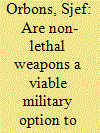

|
|
|
|
|
| Publication |
2012.
|
| Summary/Abstract |
Commanders of the International Security Assistance Force (ISAF) have repeatedly stressed the hearts and minds approach in Afghanistan, in saying that the human terrain is decisive for a successful outcome of the mission. Avoidance of civilian casualties is considered of strategic importance, and by nature highly dependent on the management of tactical level Escalation of Force (EoF) situations. Non-lethal weapons (NLWs) are expected to enable tactical commanders to avoid innocent civilian casualties in such situations. This article considers a selected NLW on its potential to accomplish this requirement. It uses a defence technology assessment approach to analyse EoF situations experienced by Dutch ISAF forces in which the NLW is inserted. The analysis demonstrates that a range of contextual factors in the Afghanistan high-risk environment tend to narrow down the window of opportunity for the NLW to help defuse the risk of unintended civil casualties.
|
|
|
|
|
|
|
|
|
|
|
|
|
|
|
|
| 2 |
ID:
113109
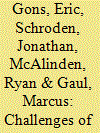

|
|
|
|
|
| Publication |
2012.
|
| Summary/Abstract |
Measuring nationwide progress of counterinsurgency operations in Afghanistan using violence trends is difficult due to several factors: aggregation of data to the national level may obfuscate disparate local trends; the observed seasonality in violence makes comparisons difficult and may obscure progress; and short-term spikes or troughs - attributable to weather, military operations and tempo, or holiday periods - heavily influence simple averaging schemes. Despite these challenges, proper understanding of violence statistics is critical to estimating the effectiveness of military forces added during a surge or redeployed as part of transition. This article explores methods for analyzing observed violence trends to identify causal factors, to provide a comparable baseline, and to inform assessments at appropriate levels of aggregation. One methodology for seasonal adjustment of violence data is discussed and shown to provide a logical baseline for examining trends. An ordinary least squares regression model is developed and implemented using time-series violence data.
|
|
|
|
|
|
|
|
|
|
|
|
|
|
|
|
| 3 |
ID:
113116
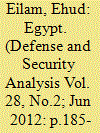

|
|
|
|
|
| Publication |
2012.
|
| Summary/Abstract |
The new government in Egypt will have to deal with the following challenges in its foreign policy: the Palestinians, Sinai, the arms race between Israel and Egypt, the nuclear issue, the Suez Canal, and the Tiran Straits. Egypt has to decide what its approach would be toward these issues and as to how to maneuver between its own interests and those of other states such as Israel and the USA. All the sides have to consider their steps carefully in order to avoid an unnecessary crisis.
|
|
|
|
|
|
|
|
|
|
|
|
|
|
|
|
| 4 |
ID:
113111
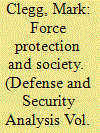

|
|
|
|
|
| Publication |
2012.
|
| Summary/Abstract |
Wars have long been fought with a firm focus upon armies' domestic contexts. These socio-political foundations have underpinned decisions regarding embarking upon war as well the conduct of war itself. Of particular importance among liberal democracies is the emphasis which is now placed upon force protection; broadly conceived as the range of measures employed to ensure the protection of servicemen and women on operations. Decisions surrounding protective equipment, deployed locations and wartime activities all face detailed scrutiny in contemporary operating environments. The attitudes of the government, the military and the civilian population combine to create a complex and dynamic backdrop of harmony and tension to this most sensitive characteristic of modern wars.
|
|
|
|
|
|
|
|
|
|
|
|
|
|
|
|
| 5 |
ID:
113114
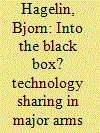

|
|
|
|
|
| Publication |
2012.
|
| Summary/Abstract |
From the recipients' perspective, arms transfers have, through the use of offsets, technology transfers, and industrial participation, become an opportunity to receive not only advanced weapons, but also technologies not otherwise available. How important are friendly relations for securing a military export order? To what extent do buyers demand advanced military or commercial technology and how are these demands accepted by the supplier? How does this influence smaller producers in relation to major producers? These questions are addressed by studying (a) the Joint Strike Fighter/F-35 by Lockheed Martin, USA, and the JAS-39 Gripen aircraft by Saab, Sweden, (b) the Medium Multi-Role Combat Aircraft competition in India for 126 combat aircraft, and (c) the Indian offset policy. In the final section, some long-term consequences are discussed.
|
|
|
|
|
|
|
|
|
|
|
|
|
|
|
|
| 6 |
ID:
113113
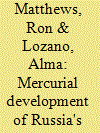

|
|
|
|
|
| Publication |
2012.
|
| Summary/Abstract |
Russia's 2006 renationalisation of its aerospace industry heralded a new era in industrial policy. Symbolising a return to the importance of securing sovereignty over the Federation's strategic assets, it also posits, powerfully, that sectors like aerospace and shipbuilding are too important to be left to the market. In what now appears a reversal of this policy approach, Moscow is promoting partial privatisation and encouraging partnership with Western aerospace companies. Foreign infusion of capital and technology is viewed as the catalyst for Russian dominance in the global military and commercial aerospace industries.
|
|
|
|
|
|
|
|
|
|
|
|
|
|
|
|
| 7 |
ID:
113112
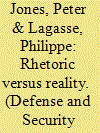

|
|
|
|
|
| Publication |
2012.
|
| Summary/Abstract |
As Canada's military mission in Afghanistan winds down and the country faces several years of fiscal austerity, all of Canada's major political parties are agreed that Canadian defence budgets must stay level or be cut. This comes at a time when the defence department is slated to replace the Canadian Forces' (CF) major equipment fleets. Canada's defence establishment thus faces some critical decisions. One option is to try to maintain its expeditionary capabilities across all three services: army, navy and air force. Absent substantial new infusions of funds, however, this approach is likely to lead to an overall and largely chaotic reduction of capabilities. Another option is to make some difficult choices as to which expeditionary capabilities to maintain as part of a strategic review of Canada's future military needs. Such an option would ensure that Canada has at least some military capacities which can reliably be devoted to the most demanding international operations, while maintaining those capabilities required for domestic duties and North American defence. Pursuing this option would accord with the new North Atlantic Treaty Organization Strategic Concept and the call for "Smart Defense" within the Alliance. This article assesses the arguments for and against the option of specialising Canada's future defence capabilities and explores scenarios as to what a future CF may look like.
|
|
|
|
|
|
|
|
|
|
|
|
|
|
|
|
| 8 |
ID:
113115


|
|
|
|
|
| Publication |
2012.
|
| Summary/Abstract |
In a succession of disclosures over the summer of 2011, the People's Republic of China acknowledged the near completion of its first aircraft carrier and the initiation of a carrier building program. These revelations have come at a time of increased tension in the South China Sea on top of the wider worries in the region concerning China's overly assertive stance and the pace of its military modernization. This perspective will examine why the status of the vessel and the program have now been made public, in addition to surveying the wider implications this upgrade to Chinese maritime capabilities will have on the stability of the region over the coming years. However, this paper concludes that there is, at present, no reason for the sensationalism nor the threat-mongering seen in many media outlets, of late. Hastily drawn conclusions based primarily on realpolitik fail to understand the nuances of this issue.
|
|
|
|
|
|
|
|
|
|
|
|
|
|
|
|
|
|
|
|
|